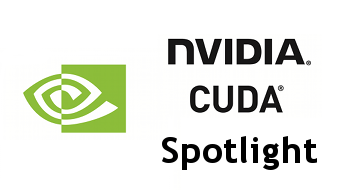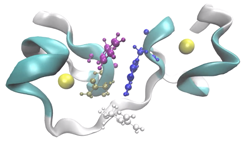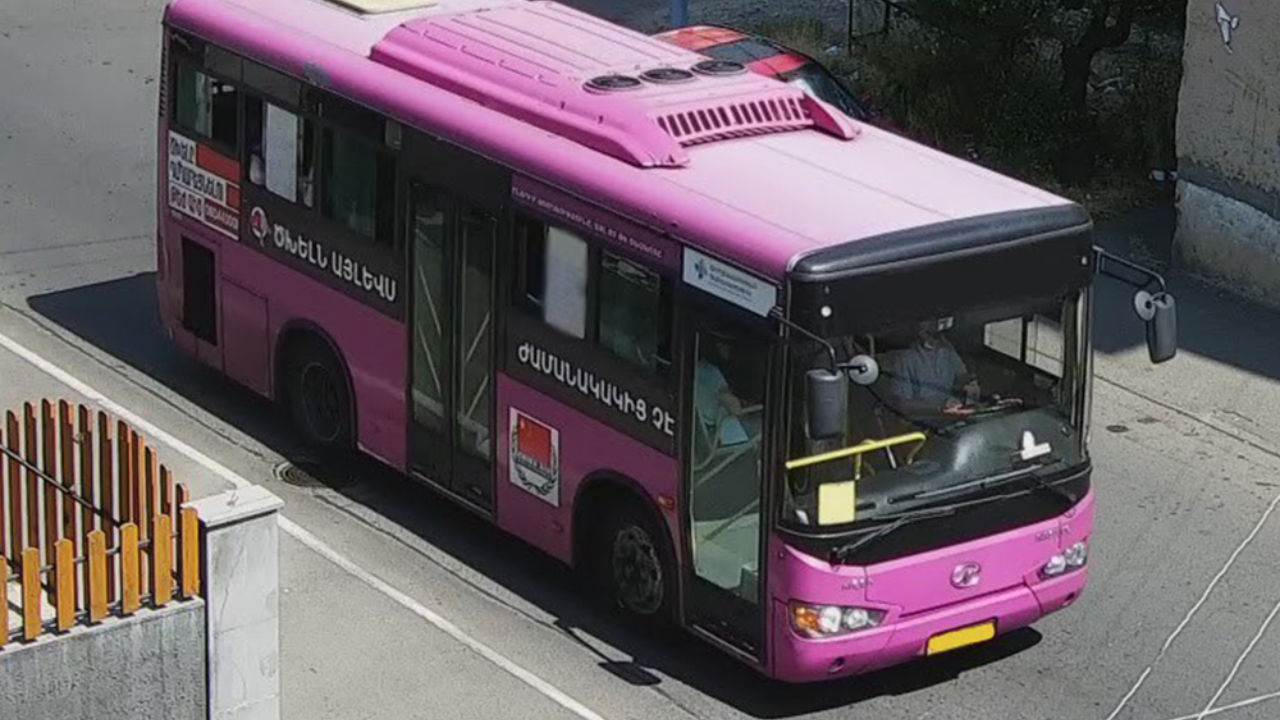 Our Spotlight is on Dr. Michela Taufer, Associate Professor at the University of Delaware.
Our Spotlight is on Dr. Michela Taufer, Associate Professor at the University of Delaware.
Michela heads the Global Computing Lab (GCLab), which focuses on high performance computing (HPC) and its application to the sciences.
Her research interests include software applications and their advanced programmability in heterogeneous computing (i.e., multi-core platforms and GPUs); cloud computing and volunteer computing; and performance analysis, modeling and optimization of multi-scale applications.
NVIDIA: Michela, what is the mission of the Global Computing Lab at the University of Delaware?
Michela: We are engaged in the design and testing of efficient computational algorithms and adaptive scheduling policies for scientific computing on GPUs, the Cloud, and Volunteer Computing.
Interdisciplinary research with scientists and engineers in fields such as chemistry and chemical engineering, pharmaceutical sciences, seismology, and mathematics is at the core of our activities and philosophy.
NVIDIA: Tell us about your work with GPUs.
Michela: My team’s work is all about rethinking application algorithms to fit on the GPU architecture in order to get the most out of its computing power, while preserving the scientific accuracy of the simulations. This has resulted in many exciting achievements!
NVIDIA: Can you provide an example?
Michela: My group and I were the first to propose a completely-on-GPU PME (Particle Mesh Ewald) code for MD (molecular dynamics) simulations. We achieved that goal by changing the traditional way researchers algorithmically look at charges in long-range electrostatics and their interactions.
With our code empowered with the PME components, we could move the traditional scale for studying membranes like DMPC lipid bilayers from membranes on the order of 72 lipid molecules (17,004 atoms) to 16-times larger membranes of 1,152 lipid molecules (27,3936 atoms) in explicit solvent [see Figure 1].
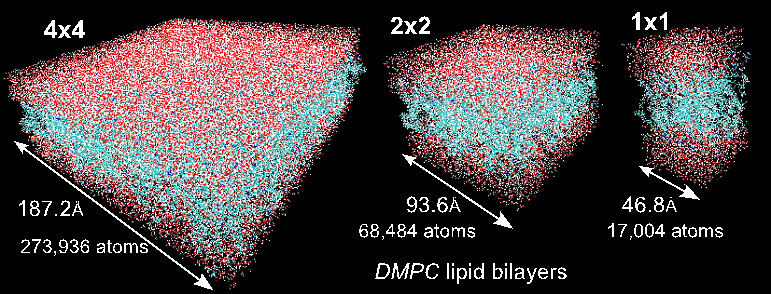
The DMPC 1×1 system describes the small system of 72 lipid molecules (36 lipids/leaflet) traditionally used for simulations on high-end clusters. DMPC 2×2 and 4×4 describe systems with 288 and 1152 lipid molecules, respectively, that we were able to study on a single GPU. Presented in Structural, Dynamic, and Electrostatic Properties of Fully Hydrated DMPC Bilayers from Molecular Dynamics Simulations Accelerated with GPUs.
NVIDIA: How do GPUs help you in your work today?
Michela: It’s not about how GPUs help my work but rather how GPUs help me to fulfill my personal and professional mission of helping scientists discover science through high-performance computing.
I will never forget the excitement of my collaborator Sandeep Patel when we were able to observe the exploration activity of small peptides on a large membrane surface. It was known that the phenomenon existed but it was not observable previously because of the complexity of simulating membranes at large space and time scales. But we did it!
We could clearly identify the location on the membrane when the peptide was external to the membrane (red dots on the peptide-membrane surface in Figure 2) versus when the peptide was directly interacting with the lipid bilayer atoms (blue dots on the peptide-membrane surface in Figure 2). This would have not been possible without GPUs, which provided us with the computing power to cope with the large length and time scales for this type of molecular simulation.
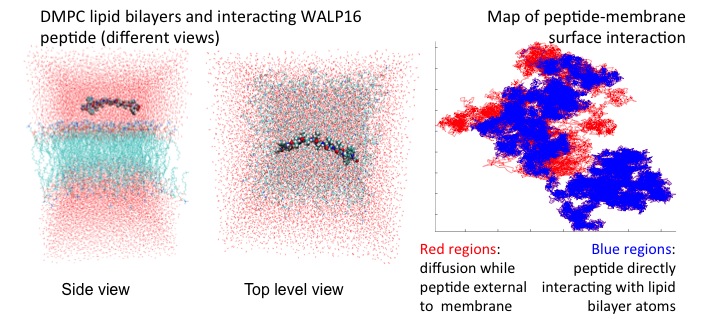
NVIDIA: What approaches have you used to apply the CUDA platform to your work?
Michela: It is all about understanding how an algorithm is mapped to the threads. This understanding was vital in order to overcome, for example, the bottleneck of dealing with charge spreading, the most compute intensive component of the PME calculation.
In this step of the MD simulation, charges are spread around a neighborhood of 4x4x4 lattice points and multiple charges can contribute to the total charge at each point. The process involves placing the charges on lattice points and accumulating the impact of charges for each point and simulations step (as shown in Figure 3.a where the impact of three charges sums up in one lattice point).
A local list of charges can be built for each lattice point. The critical step in the computation is to efficiently update this list as the particles move.
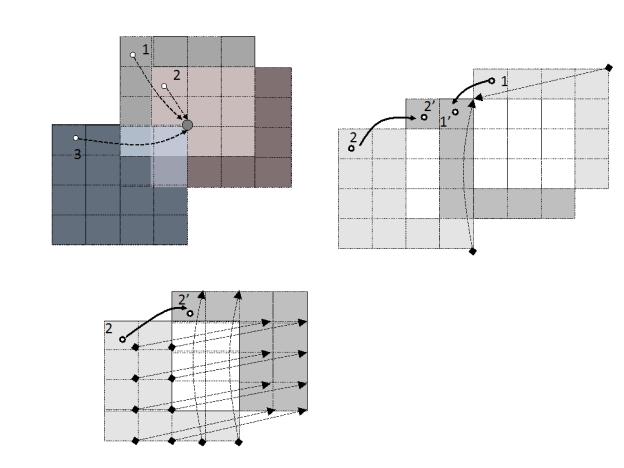
When a charge moves due to dynamics of the system (as shown in Figure 3.b where a charge moves from Point 2 to Point 2′), we can identify three regions of the lattice:
1. Region from which charge is removed from neighbor lists (light gray region in Figure 3.b)
2. Region whose neighbor lists gain the charge (dark grey region in Figure 3.b)
3. Region whose neighbor lists are not impacted (white region in Figure 3.b)
The lattice points gaining the charge impact are initially not aware of the charge movement and thus need to search through the global list of charges for the information when an update takes place. This search is the killing point of the performance but it was also where the understanding of the physical process made the difference for us.
We observed that the movement of a charge produces an equal number of lattice points gaining the charge and points losing the charge. Lattice points losing a charge are aware of the destination points in a one-to-one mapping schema shown in Figure 3.c. This was our “Aha!” moment!
We immediately thought we could benefit from this one-to-one mapping to reduce the time for the update of the lists by having the threads of the points losing the charge updating the lists of the points gaining the charge.
This prevents the lattice points gaining the charge impact from having to explore the whole global list of charges and made the difference in the PME performance when executed completely on GPU [See: FEN ZI: GPU Enabled Molecular Dynamics Simulation of Large Membrane Regions Based on CHARMM Force Field and PME].
NVIDIA: Which CUDA resources do you recommend?
Michela: The CUDA Libraries webpage is a great source of software libraries for my group. For example, in FEN ZI we downloaded the cuFFT library and used it for the long-range electrostatic computations. In general we heavily rely on CUDA Zone for updates, libraries, and new ideas. This site is a must for any CUDA developer.
NVIDIA: What hardware and software are you using?
Michela: I have been using several GPU generations of NVIDIA, starting with a gamer GPU in 2009, all the way to the Tesla K20 in 2014. Our primary software is written in C and CUDA C.
NVIDIA: How did you first learn about CUDA?
Michela: In November 2007, at the SC07 conference, I went by the NVIDIA booth where I met NVIDIA’s Marc Adams. We chatted about CUDA and he gave me a memory stick with the CUDA code. I was so excited.
I had read about the Brook language and was considering writing my MD code in that language. Marc changed my mind. While speaking with him I immediately saw the potential hidden in that small memory stick.
I returned to my university and started working with one of my students on our MD code for GPUs. In 2008 we finalized the first version of our code; in April 2009 we published our work on what would become the FEN ZI MD code.
Today FEN ZI is available for the public as open-source software and it has been fundamental for me and my colleague Sandeep Patel in the study of membranes and membrane penetrations.
NVIDIA: What excites you the most about your work?
Michela: The scientific discovery, definitely. For me seeing how my work with GPUs enables scientific discovery is THE big motivator for my work.
I feel I have a very special relationship with GPUs because they helped me to reveal my “MacGyver spirit”. At the very beginning of the GPU era, the few tools and libraries that were available at the time were incomplete and I had to rely on my creativity and imagination to rethink algorithms and applications. GPUs empowered me to build an “explosive” solution to my algorithmic problems using a Swiss army knife and bubble gum.
Today, of course, there is a robust ecosystem of tools, libraries, applications, companies, research labs and other resources built around GPU computing, making it much more accessible.
I am happy to be a member of the select group of people who have attended every single GPU Tech Conference from the very beginning, starting with the NVISION 2008 meeting in which we (the HPC people) were relegated in a small corner of the convention center in San Jose.
Before leaving for NVISION I remember I spoke with a colleague in graphics who was telling me how HPC on GPUs was “hopeless.” This year at GTC 2014, I was looking around at all the innovation and breakthroughs, and thinking back to the 2008 meeting, where a small group of HPC people had a big vision and lots of courage. I am pleased my colleague was wrong and am so proud to be part of this very special community.
Read more GPU Computing Spotlights.
